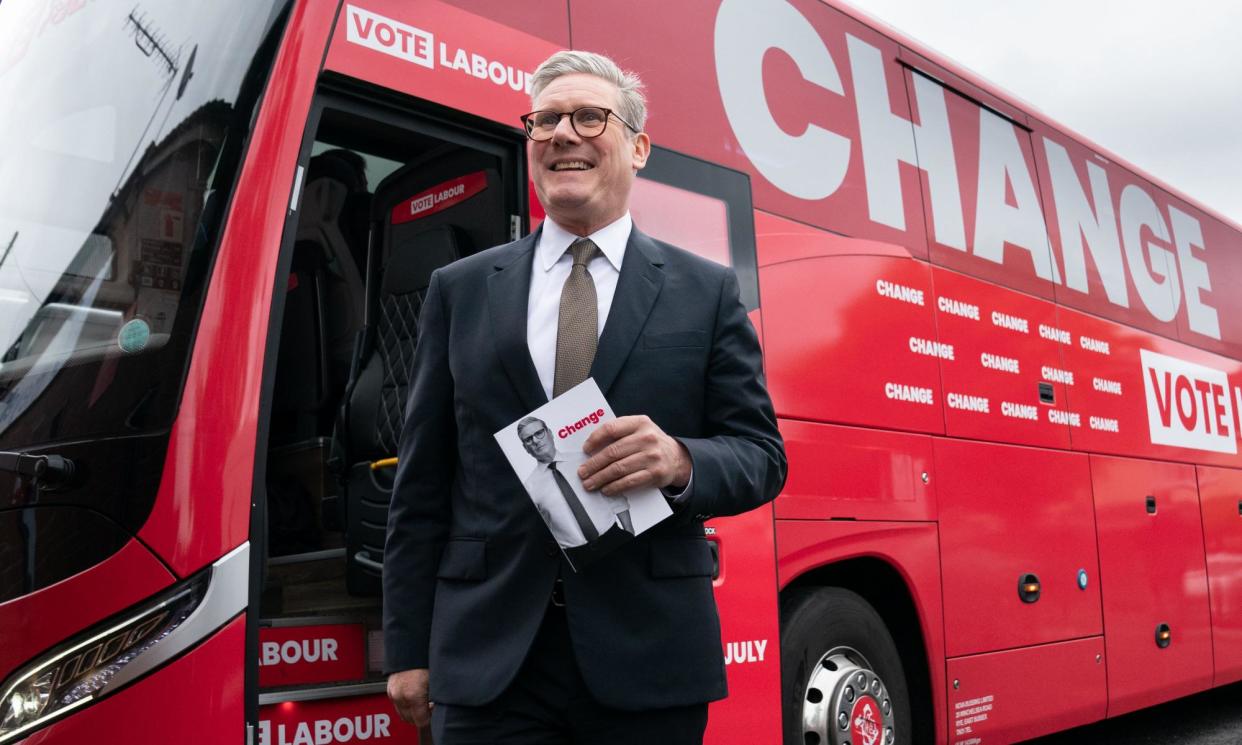A wobbly left and a wary right could cut the Labour vote with low turnout

Twenty-point poll leads, historic strength on all the polling indicators, a flailing opponent fighting for third place – and yet still Labour worries. It is no wonder.
Dark nights of disappointment in suburban leisure centres haunt Labour nightmares, with candidates and activists cruelly betrayed by late swings and polling errors: 1970, 1992, 2015 – every generation of Labourites bears its scars.
This is not a Labour country, they will tell you. It is a Tory country that occasionally lets Labour in. There is no such thing as a safe lead.
So Labour worries. And there are always things to worry about, even in a campaign as apparently one-sided as this. Labour’s vote share has softened a little in recent polling, though the headline lead remains exceptionally strong, as Tory numbers have sagged just as much or more.
Plenty of voters remain undecided, though, including many 2019 Conservative voters who look temperamentally Tory and lukewarm about the Labour offer. The contest isn’t over, even if the likely winner now looks clear.
Labour’s dominance of the early running is, paradoxically, one source of uncertainty about the final stretch. Many in the media are already treating the election as a foregone conclusion and switching their focus from a failing Conservative incumbent to Labour as a government-in-waiting.
Labour’s manifesto, released last week, featured many small and specific promises while being vague about the broader plan. “Little by little” is not an inspiring rallying cry, and Labour’s efforts to duck bigger questions may come to frustrate voters as election day approaches.
Such frustration may pose particular problems on Labour’s “wobbly left wing” – many wavering progressive voters hold strong views on, for example, the climate emergency or the Gaza crisis and are tempted by parties offering more strident views. The Greens are standing a record slate of candidates, giving voters in more seats the chance to back them. Their overall support has held up in the campaign so far, with Opinium last week showing the Greens winning 6-8% of young voters, remainers and 2019 Labour voters.
A new poll of British Muslims from Savanta last week shows both enduring Labour strength in this group and substantial losses to Greens and others, particularly among British-born and Asian-heritage Muslims, and those who name the Israel-Palestine conflict as a top issue.
Wobbles on the left flank also matter because victory in many target seats depends on Labour applying a successful tactical squeeze, convincing supporters of third-placed parties to lend their votes to Labour in order to defeat the local Tory incumbent. Persuading voters to accept a second-best option is hard if Labour’s offer looks weak to them, and harder still if they believe Labour will win nationwide anyway.
Yet a move leftwards to try to secure progressive tactical votes also comes with risks, potentially alienating more moderate Tory switchers whose anger at the government does not easily translate into affection for the opposition. Such voters may already be wary about handing a blank cheque to a dominant Starmer government and they may yet reconsider their choice to switch if Labour makes a late move leftwards.
Labour’s dominant position may be hard to maintain through the final stretch of the race. But Labour will also worry that this dominant position is a mirage. While theits surprise Labour defeats in 1992 and 2015 are most widely remembered, they are two examples of a recurring pattern.
Labour vote shares were overstated in all but one of the elections between 1992 and 2015, while the Conservative vote share was underestimated in every election in this period. If the polls are wrong again, history suggests it is Labour they will disappoint. Abstention is a further source of risk. Another three weeks of dull and cautious campaigning may lead less-engaged voters to tune out altogether and stay home on polling day. Turnout slumps accompanied both of Tony Blair’s landslide wins in 1997 and 2001, with the biggest falls coming in safe Labour areas. Low turnout may be a bigger risk to Labour at this election, as the party’s support is particularly strong in groups such as the young and the struggling, who are often hard to get to the polls, while what remains of Tory strength is concentrated among pensioners, who are not. High abstention could yet narrow the final margin. These weaknesses are not only a source of risk in what remains of the campaign, but also an early sign of the challenges that will follow. At the moment, a universally reviled government provides a source of unity and a target for anger, helping to paint over cracks in a broad and unwieldy electoral coalition. Such unity will not last long once the Conservatives are ousted and Labour becomes the target of voters’ grievances.
The challenges ahead are staggering. Yet Labour’s obsessively cautious campaign has left voters with only a vague sense of how they will be met. The ruthless message discipline designed to minimise risk for Labour on the campaign trail has stored up problems for the government to come.
Labour should keep in mind the cautionary lessons of 2019. Boris Johnson ran a ruthlessly disciplined campaign that promised change while staying vague on specifics. Hope for change swept him into office; betrayal and disappointment will shortly sweep out his successors. The lesson from 2019 is clear: a promise of change can get Starmer into No 10. But if he wants to survive, that promise must be kept.
Robert Ford is professor of political science at Manchester University and co-author of The British General Election of 2019

 Yahoo News
Yahoo News 
